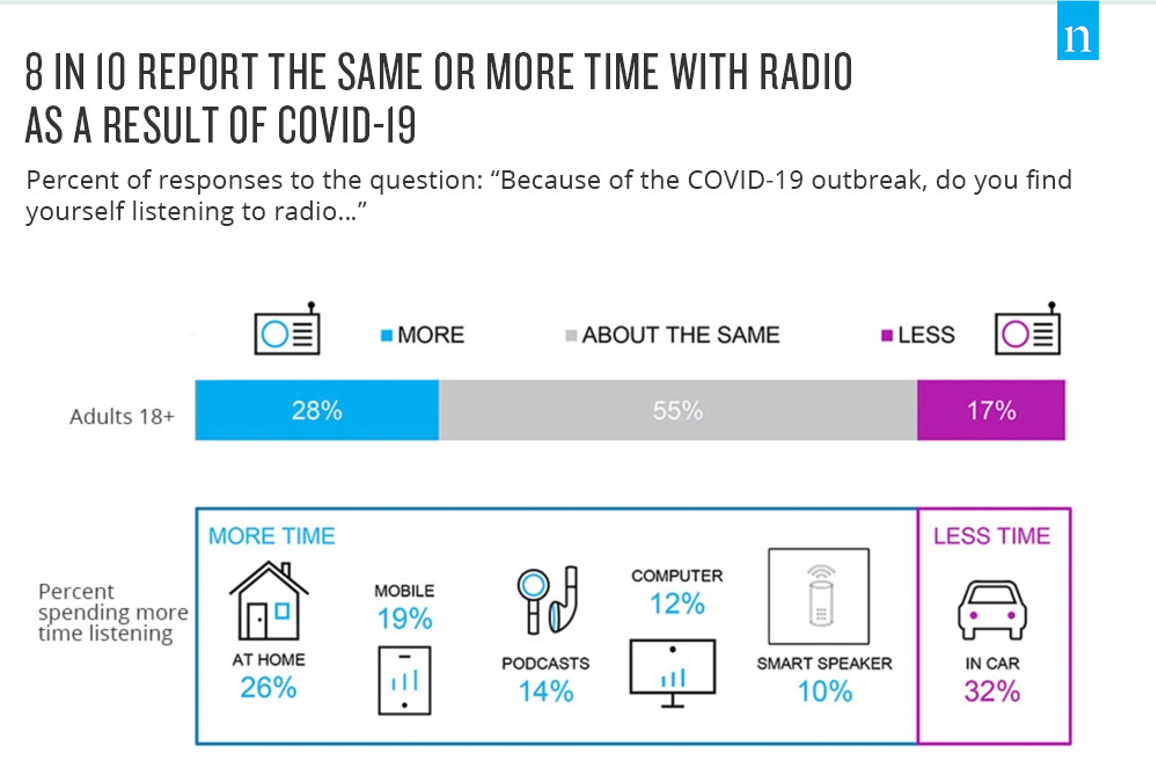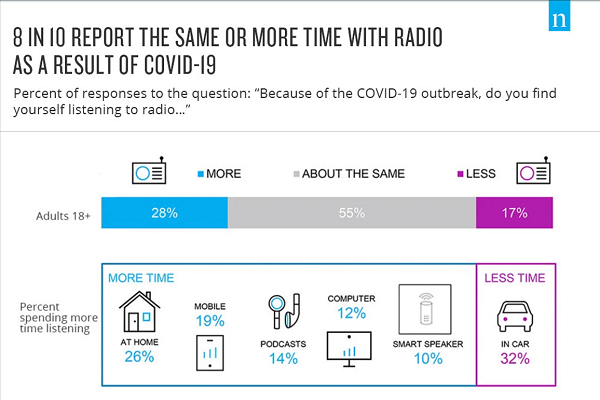28% of Americans Are Listening to More Radio Because of the COVID-19 Pandemic, Including 10% More on Smart Speakers
 The COVID-19 coronavirus pandemic is forcing many Americans to quarantine at home, leading many to listen to the radio more than usual, according to a new survey by Nielsen. Only 17% of Americans reported spending less time listening to the radio, a counterintuitive result considering the overall drop in time spent commuting and the mushrooming number of media options available in the house.
The COVID-19 coronavirus pandemic is forcing many Americans to quarantine at home, leading many to listen to the radio more than usual, according to a new survey by Nielsen. Only 17% of Americans reported spending less time listening to the radio, a counterintuitive result considering the overall drop in time spent commuting and the mushrooming number of media options available in the house.
Home Radio
The coronavirus pandemic is keeping a large section of the U.S. at home and there are a lot of content options when you can’t go outside or commute to work. Browsing television streaming platforms alone ensures never running out of new things to watch. The same goes for audiobooks and the ballooning podcast market in the pure aural space. Nonetheless, Nielsen’s survey of 1,000 American adults found that 55% are listening to the same amount of radio while more than a quarter of the population is spending more time tuning in than they did before the pandemic.
Part of that could be because of the uncertainty of the moment and how people feel about the news on the radio. Six out of ten people surveyed said they trust the radio to be fast at providing accurate information about the pandemic. Close to half of those asked said they rely on radio announcements to find out where they can shop locally, and 42% pointed to radio as a boon in helping them cope with the outbreak.
“In this environment, it’s no surprise that people say they use radio as a major source of information and connection,” Nielsen Audio managing director Brad Kelly said in a statement. “Whether it’s for local news, a place to listen to what is happening, to connect with community members or simply as a way to find out which essential retailers are open for business, radio is continuing to fill those needs for consumers everywhere.”
The Medium is the Message
People are listening to more audio content from other sources as well. The study reported 10% of respondents were spending more time listening to smart speakers, and 19% said they were listening more through mobile devices. Media consumption is already a large chunk of the day for Americans. People in the U.S. consume close to 12 hours of media a day, although using more than one screen at a time counts for double time. Staying home could raise that time by 60%, according to a different Nielsen study.
“In a time of heightened uncertainty and disrupted routines, consumers are turning to radio as a trusted source of information and community connection, mirroring patterns observed during past regional and national disasters and weather events,” Kelly said. “Radio is a local lifeblood for millions of consumers and specializes in keeping audiences up-to-date and plugged into what matters most to them in their community.”
Follow @voicebotai Follow @erichschwartz
What Alexa, Siri, and Google Assistant Say About the Coronavirus









